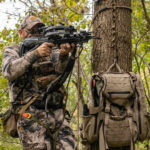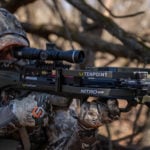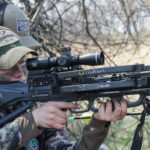Scholars believe that the crossbow first appeared in Asia as early as 2,000 BC. The bow (called the “prod” on a crossbow) of early crossbows was made of a single piece of wood.
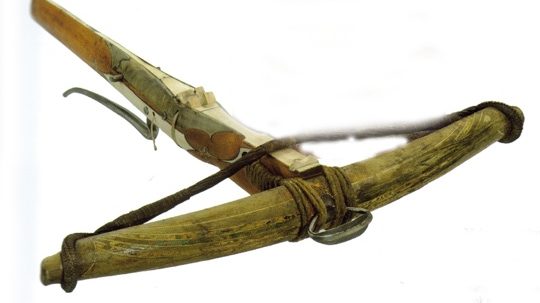
According to Guinness World Records (2004), the earliest reliable record of crossbow usage is in the Battle of Ma-Ling, Lingyi, China at 341 BC. By the 200s BC, the crossbow was well developed and quite widely used in China.
Crossbows have been found among the soldiers of the Terracotta Army in the tomb of Emperor Qin Shi Huang (260-210 BC).
During the Crusades composite bows were made from layers of different material, often wood, horn and sinew, glued together and bound with animal tendon.
These composite bows could be much more powerful than wooden bows, and were adopted for crossbow prods across Europe. As steel became more widely available around the 14th century, spring steel prods came into use.
The crossbow prod is very short compared to ordinary bows, resulting in a short draw length. This makes crossbows inefficient at storing energy, and to compensate they must have very heavy draw weights.
Although some crossbows (ancient or modern) are drawn using only the unassisted arm strength of the archer, more powerful crossbows required some sort of mechanical device to draw the string.
These drawing mechanisms were of many different forms, using levers, ratchets and pulleys in various ways.
The use of these devices allowed soldiers to use and fire weapons with a draw force far in excess of what they could have handled with a bow.
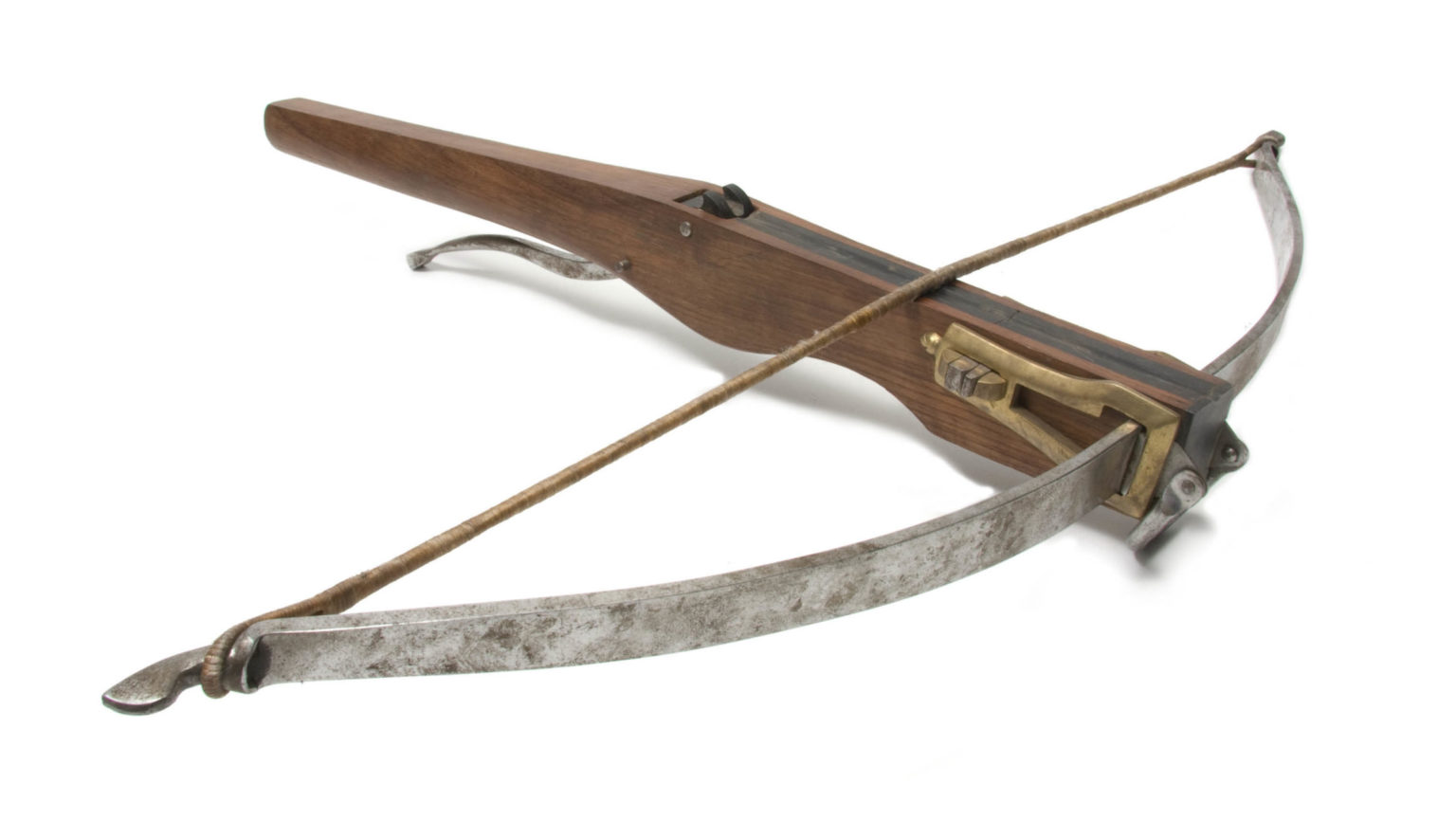
In the later years of the crossbow it had enough kinetic energy to penetrate any knight’s armor hit squarely (some knights carried their own crossbows into battle): some reached a draw force of nearly 350 pounds, compared to the 60-180 pound draw force for a longbow.
Moreover, crossbows could be kept cocked and ready to shoot for some time with little effort, allowing crossbowmen to aim better and to “cover” a target area, while archers could not keep their powerful bows pulled for long periods of time.
The projectiles of a crossbow were called “bolts.” They were much shorter than arrows and typically two to three times heavier.
Today’s crossbows shoot arrows that are not much shorter than those shot from vertical archery equipment. There is an optimum weight for arrows to achieve maximum kinetic energy, which varies depending on the strength and characteristics of the crossbow.
The arrows like with vertical equipment, typically have three fletchings and sit on the rail with the cock vane resting in the deep groove of the rail.
Crossbow arrows can be fitted with a variety of heads, field points for target practice and broadheads, both expanding and fixed bladed for hunting. There are also a variety of specialty heads for hunting small game and fowl.
The first western reference to the crossbow is to the gastraphetes (“belly-bow”) of early Hellenistic period (ca. 400 BC). The Romans called the crossbow an arcuballista (hence name “arbalest”). They did not employ it as a massed weapon, but used it as a scout weapon and for hunting.
Other sources note its usage in Western Africa from where enslaved inhabitants brought it to America. Light hunting crossbows were traditionally used by the Inuit in Northern America, as well as being found throughout Eurasia and the Indonesian Islands.
The crossbow was also often used on horseback, especially in Scandinavia. The crossbow became obsolete in warfare in the 15th century after firearms were introduced.
It continued to be used widely for hunting, however, and also became popular for tournament shooting.
Crossbows are still used for hunting in some parts of the world, especially Africa and Southeast Asia, but the practice has been outlawed or restricted in many countries, including the United States until recently.
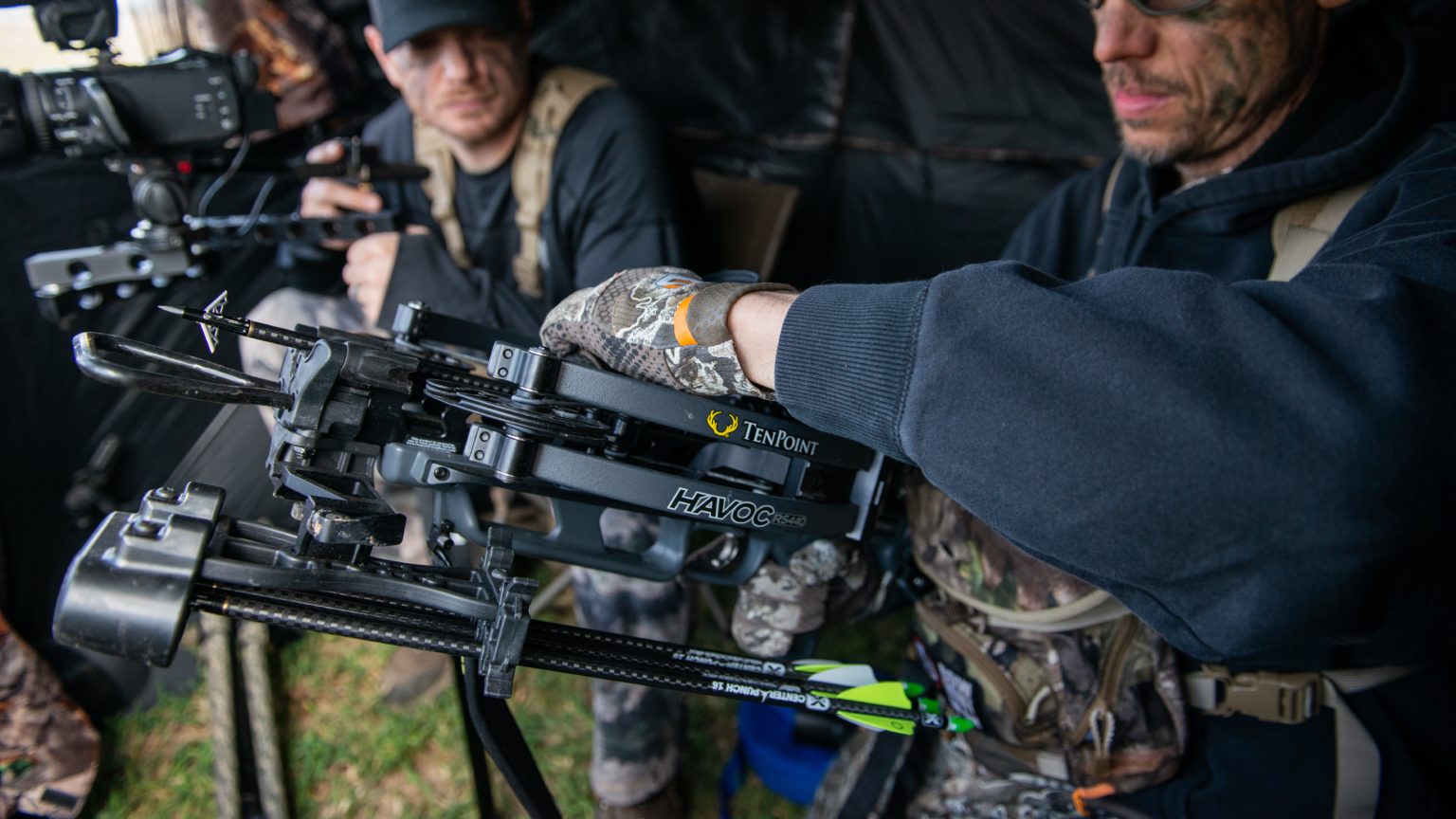
Today, in North America, the crossbow is experiencing resurgence in popularity that makes it the fastest growing segment of modern hunting.
Currently twenty-eight states and four Canadian Provinces consider the crossbow to be just another form of legal archery equipment.
For many years on this continent the crossbow was maligned and presented in an unkindly light by those who were misinformed and unwilling to share the woods with the crossbow hunter.
There was a common misconception that the crossbow hunter had some unfair advantage over the vertical hunter, but decades of documented crossbow hunting in states like Wyoming, Arkansas, Ohio and several of the more progressive Canadian Provinces, proved this to be absolutely untrue.
The crossbow hunter harvests no greater percentage of deer than the vertical hunter does.
The crossbow is still a short-range weapon that requires the user to possess highly developed hunting skills in order to be successful on a regular and consistent basis.
Crossbow hunting is the proverbial snowball picking up speed and rapidly gaining size as rolls down the hill.
As more hunters come into contact with it, the walls of ignorance are being broken down and a general acceptance of the crossbow as just one more form of effective archery equipment is becoming more prevalent.
It has been well documented that the crossbow is an excellent tool to aid in hunter recruitment and retention.
It is user friendly regardless of age, sex or physical ability and it is bringing more new hunters to our sport every day. In a time when hunter numbers are falling worldwide, the crossbow is a ray of sunshine that will help to preserve our hunting heritage for a few extra decades.
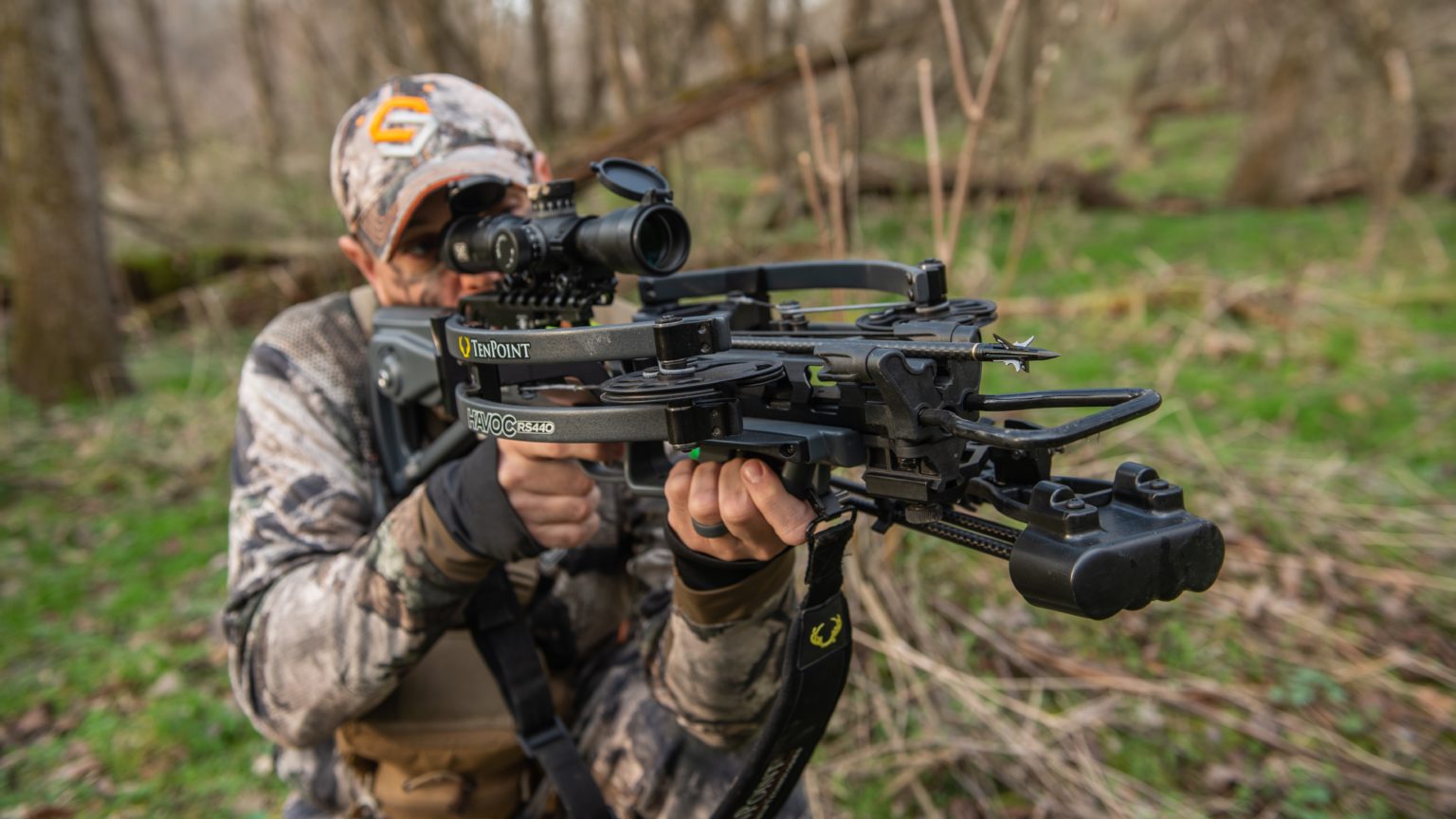
If you have yet to shoot a crossbow, you owe it to yourself to pick one up and give it a try.
The crossbow is not for everyone, but if one is to discuss the crossbow with a minimum amount of intelligence, what better way to learn than to put one in your hands and shoot a dozen arrows into a target.
The day is dawning and the crossbow is coming with the rising sun and sooner or later will be a legal option all across North America. You can go to the bank on it!


